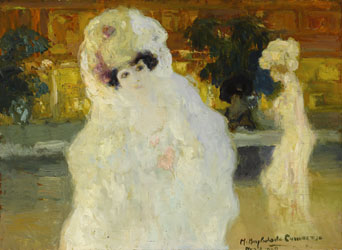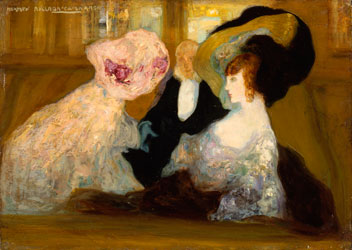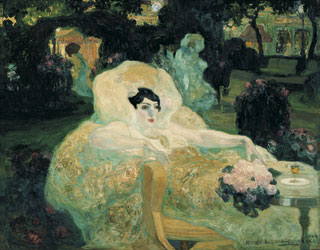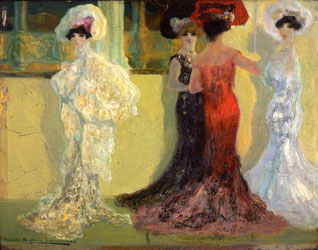- 01. Evocation of the nude
- 02. Paris nocturnes
- 03. Portraits
- 04. The splendour of women
- 05. A passion for dance
Anglada-Camarasa.
Arabesque and Seduction
6 November 2012 - 31 March 2013

Málaga, 2012 © 2012 Foto Gonzalo de la Serna

Thyssen-Bornemisza © Anglada Camarasa, VEGAP,
Málaga, 2012 © Colección Carmen Thyssen-Bornemisza

Paris nocturnes
In Paris the artist evolved his own particular aesthetic. This was the period when he created the classic image of the femme fatale through a highly individual style in which light and the application of colour give life to the vaporous, ethereal women who peopled the city’s night spots.
From 1898 Anglada-Camarasa became involved in the Parisian art scene and his friend Baca-Flor introduced him to Josep Oller’s cabarets, which became the principal subject of his paintings throughout this lengthy phase of his career. Anglada-Camarasa took to the streets of Paris in order to depict evocative moments from its night-life, and women became one of his principal pictorial motifs. He began to express this interest through numerous oil sketches from life, painted on small panels that could easily be carried around during his night-time excursions. Painted with a vigorous, dynamic brushstroke, they aim to capture the essence of a fleeting moment.
The discovery of Parisian night-life also offered Anglada-Camarasa a means to move away from realism and his works began to acquire a highly distinctive appearance due to his particular approach to colour, which was close to the Nabis aesthetic, and to his depiction of the electric light in which all his compositions are bathed. As a result, these women take on an appearance that is at once frivolous and threatening. On occasions they seem almost spectral due to the artist’s use of tones of white, while on other occasions they acquire a greater elegance that reflects a more sophisticated ambience. At the same time the artist started to focus on the undulating forms of the female body, conveying an attractive sense of movement while emphasising its highly sensual character through his use of colour.

